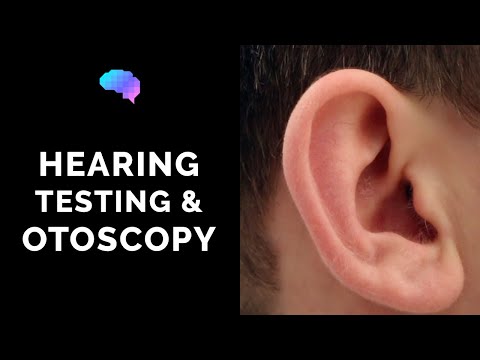Otoscopy and Hearing Assessment | Ear Examination | Rinnes & Weber's test | OSCE Guide | PLAB 2
Hearing assessment is an essential component of medical evaluation, particularly in fields such as otolaryngology, general practice, and pediatrics. The otoscopic examination along with Rinne’s and Weber’s tests forms the crux of the Objective Structured Clinical Examination (OSCE) for PLAB 2. This guide provides a detailed overview of how to effectively perform these assessments.
#### Otoscopy
Otoscopy is a fundamental procedure used to visually examine the ear canal and tympanic membrane (ear drum). It is crucial for diagnosing conditions such as ear infections, eardrum perforations, and impacted earwax.
**Steps to Perform Otoscopy:**
1. **Prepare the Equipment**: Ensure that the otoscope is functioning well, with a bright light and clean speculum appropriate for the patient’s age.
2. **Explain the Procedure**: Inform the patient about what you are going to do and why it is necessary. This can help in alleviating any anxiety they might have.
3. **Position the Patient**: The patient should be seated with their head slightly tilted away from the side being examined.
4. **Hold the Otoscope Properly**: Grip the otoscope like a pen, stabilizing your hand against the patient’s face to avoid injury if they move suddenly.
5. **Insertion of Speculum**: Gently pull the ear up and back for adults or down and back for children to straighten the ear canal. Carefully insert the speculum into the ear canal without forcing it.
6. **Visualization**: Look through the otoscope lens to examine the ear canal and tympanic membrane. Check for signs of infection, discharge, foreign bodies, or damage.
#### Hearing Assessment: Rinne’s & Weber’s Tests
Rinne’s and Weber’s tests are tuning fork tests that assess hearing loss by comparing air conduction (AC) with bone conduction (BC).
**Rinne’s Test:**
The Rinne test differentiates between conductive hearing loss (CHL) and sensorineural hearing loss (SNHL).
– Strike a tuning fork (typically 512 Hz) gently on your elbow or knee to start it vibrating.
– Place it on the mastoid process until sound is no longer heard.
– Then immediately move it next to but not touching their outer ear canal.
– Ask if they can hear it again; positive Rinne indicates that air conduction (AC) is greater than bone conduction (BC), typical of normal hearing or SNHL.
**Weber’s Test:**
Weber’s test identifies which type of hearing loss is present, as well as whether it affects one or both ears.
– Activate a tuning fork in similar fashion as before.
– Place its base at midline forehead or on top of their head evenly between their ears.
– Ask where they hear it best; normally sound should be heard equally in both ears.
If sound localizes to one side:
– In CHL sound localizes to afflicted ear
– In SNHL sound localizes to better-hearing ear
#### Interpretation:
**Normal Hearing:**
– Positive Rinne test
– Sound heard equally in both ears during Weber test
**Conductive Hearing Loss:**
– Negative Rinne test
– Sound lateralizes toward affected side in Weber test
**Sensorineural Hearing Loss:**
– Positive Rinne but poorer compared to normal side
– Sound lateralizes toward better-hearing side in Weber test
### Conclusion
Performing accurate otoscopic examinations along with comprehensive auditory testing using Rinnes & Webers tests are vital skills assessed during OSCEs such as PLAB 2 These evaluations not only aid in diagnosing various auditory conditions but also help tailor appropriate treatment plans Hence mastering these techniques through diligent practice remains imperative for all aspiring medical practitioners

